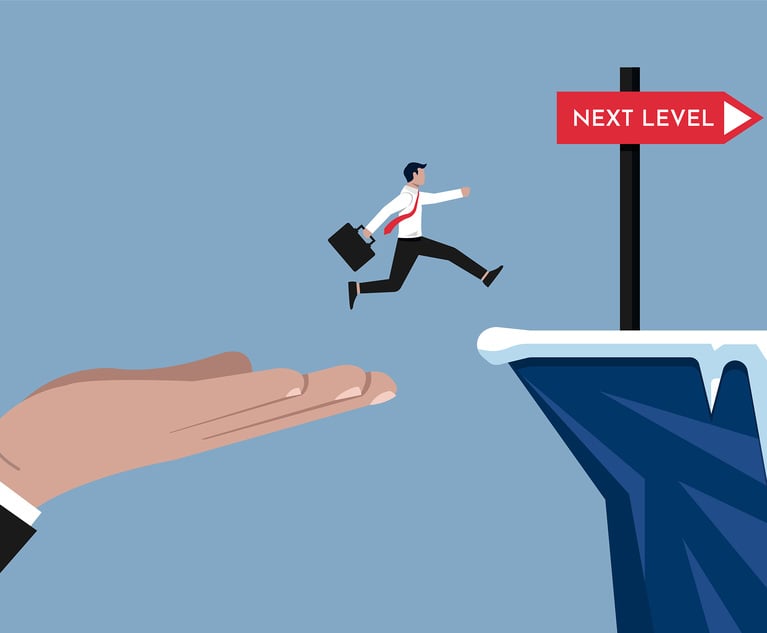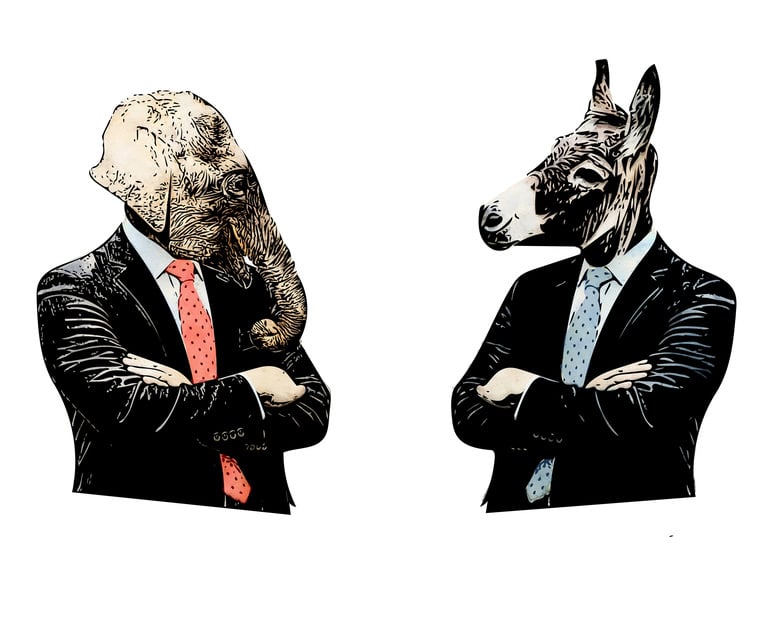Green Peace of Mind
Environmentally sustainable practices can meet both present and future needs.
March 31, 2009 at 08:00 PM
7 minute read
The past few years have seen a renewed concern about the harm that misuse and overuse of natural resources cause to an increasingly fragile global environment. And let's face it: As members of a profession that generates mountains of paperwork annually, we lawyers contribute more than our share to a serious problem. According to the latest ABA report, a single lawyer can use as many as 100,000 sheets of printer and copier paper in just one year. That's the equivalent of a half-ton of paper.
What's more, the life cycle of that half-ton of paper, from production to recycling, translates to the equivalent of more than four tons of greenhouse gas emissions. And if that paper is deposited in a landfill, add another ton of carbon dioxide to that leather wing-tip or Manolo Blahnik footprint.
The good news is that as inside counsel we are uniquely positioned to take a leadership role in the promotion of environmentally sustainable practices in our own companies and in the companies with which we do business.
At my company, Kaplan Higher Education (KHE), we take environmental sustainability very seriously. Over the past year and a half, we have begun implementing paper and energy reduction practices, starting with small, high-profile measures while looking to the future with larger-scale, technical initiatives to further reduce waste.
At KHE, foam and paper cups are a thing of the past. Each employee now has an attractive stainless steel travel mug bearing our logo and the tag line “Earth Day Every Day.” By doing this, we save paper, remind our employees that environmental sustainability starts with the individual and reinforce our internal branding, which makes the marketing folks happy. More than 90 percent of all types of paper we purchase have at least 30 percent post-consumer recycled content. And we capture more than 90 percent of discarded paper by providing easy access to recycling bins.
As a companywide initiative, but especially in the legal department, we promote the use of existing technology to reduce or at least make the best use of the paper we consume. We discourage the use of paper files in favor of electronic, searchable databases, and we encourage black-and-white, double-sided printing and copying.
Our energy reduction efforts also leverage existing technology. We vastly reduce travel and associated environmental costs by utilizing telephone, video and web-conferencing technology whenever possible. And as office equipment wears out, we replace it with more efficient Energy Star-labeled equipment that makes use of power-down management software and screensavers.
Our future technology plans include more sophisticated electronic records and document management systems that enable electronic archiving and online collaboration, which will allow us to “just say no” to printing. Granted, making the transition from paper to onscreen composition and editing is not an easy one. With practice and encouragement from our peers, however, most of us will make the switch with little effort.
When it comes to KHE's brick-and-mortar schools and universities, we have made energy-efficient choices for the facilities we own and, where possible, encouraged our landlords, management companies and suppliers to adopt energy-saving practices.
Whether small or large, basic or high tech, environmentally sustainable practices start with taking personal responsibility and encouraging those around us to make changes that satisfy our current needs while preserving our planet's resources for the future. It's a daily effort that will provide better–greener–peace of mind for us and our organizations.
The past few years have seen a renewed concern about the harm that misuse and overuse of natural resources cause to an increasingly fragile global environment. And let's face it: As members of a profession that generates mountains of paperwork annually, we lawyers contribute more than our share to a serious problem. According to the latest ABA report, a single lawyer can use as many as 100,000 sheets of printer and copier paper in just one year. That's the equivalent of a half-ton of paper.
What's more, the life cycle of that half-ton of paper, from production to recycling, translates to the equivalent of more than four tons of greenhouse gas emissions. And if that paper is deposited in a landfill, add another ton of carbon dioxide to that leather wing-tip or Manolo Blahnik footprint.
The good news is that as inside counsel we are uniquely positioned to take a leadership role in the promotion of environmentally sustainable practices in our own companies and in the companies with which we do business.
At my company, Kaplan Higher Education (KHE), we take environmental sustainability very seriously. Over the past year and a half, we have begun implementing paper and energy reduction practices, starting with small, high-profile measures while looking to the future with larger-scale, technical initiatives to further reduce waste.
At KHE, foam and paper cups are a thing of the past. Each employee now has an attractive stainless steel travel mug bearing our logo and the tag line “Earth Day Every Day.” By doing this, we save paper, remind our employees that environmental sustainability starts with the individual and reinforce our internal branding, which makes the marketing folks happy. More than 90 percent of all types of paper we purchase have at least 30 percent post-consumer recycled content. And we capture more than 90 percent of discarded paper by providing easy access to recycling bins.
As a companywide initiative, but especially in the legal department, we promote the use of existing technology to reduce or at least make the best use of the paper we consume. We discourage the use of paper files in favor of electronic, searchable databases, and we encourage black-and-white, double-sided printing and copying.
Our energy reduction efforts also leverage existing technology. We vastly reduce travel and associated environmental costs by utilizing telephone, video and web-conferencing technology whenever possible. And as office equipment wears out, we replace it with more efficient Energy Star-labeled equipment that makes use of power-down management software and screensavers.
Our future technology plans include more sophisticated electronic records and document management systems that enable electronic archiving and online collaboration, which will allow us to “just say no” to printing. Granted, making the transition from paper to onscreen composition and editing is not an easy one. With practice and encouragement from our peers, however, most of us will make the switch with little effort.
When it comes to KHE's brick-and-mortar schools and universities, we have made energy-efficient choices for the facilities we own and, where possible, encouraged our landlords, management companies and suppliers to adopt energy-saving practices.
Whether small or large, basic or high tech, environmentally sustainable practices start with taking personal responsibility and encouraging those around us to make changes that satisfy our current needs while preserving our planet's resources for the future. It's a daily effort that will provide better–greener–peace of mind for us and our organizations.
This content has been archived. It is available through our partners, LexisNexis® and Bloomberg Law.
To view this content, please continue to their sites.
Not a Lexis Subscriber?
Subscribe Now
Not a Bloomberg Law Subscriber?
Subscribe Now
NOT FOR REPRINT
© 2025 ALM Global, LLC, All Rights Reserved. Request academic re-use from www.copyright.com. All other uses, submit a request to [email protected]. For more information visit Asset & Logo Licensing.
You Might Like
View All
Beyond the Title: Developing a Personal Brand as General Counsel

Step 1 for Successful Negotiators: Believe in Yourself
Trending Stories
- 1Restoring Trust in the Courts Starts in New York
- 2'Pull Back the Curtain': Ex-NFL Players Seek Discovery in Lawsuit Over League's Disability Plan
- 3Tensions Run High at Final Hearing Before Manhattan Congestion Pricing Takes Effect
- 4Improper Removal to Fed. Court Leads to $100K Bill for Blue Cross Blue Shield
- 5Michael Halpern, Beloved Key West Attorney, Dies at 72
Who Got The Work
Michael G. Bongiorno, Andrew Scott Dulberg and Elizabeth E. Driscoll from Wilmer Cutler Pickering Hale and Dorr have stepped in to represent Symbotic Inc., an A.I.-enabled technology platform that focuses on increasing supply chain efficiency, and other defendants in a pending shareholder derivative lawsuit. The case, filed Oct. 2 in Massachusetts District Court by the Brown Law Firm on behalf of Stephen Austen, accuses certain officers and directors of misleading investors in regard to Symbotic's potential for margin growth by failing to disclose that the company was not equipped to timely deploy its systems or manage expenses through project delays. The case, assigned to U.S. District Judge Nathaniel M. Gorton, is 1:24-cv-12522, Austen v. Cohen et al.
Who Got The Work
Edmund Polubinski and Marie Killmond of Davis Polk & Wardwell have entered appearances for data platform software development company MongoDB and other defendants in a pending shareholder derivative lawsuit. The action, filed Oct. 7 in New York Southern District Court by the Brown Law Firm, accuses the company's directors and/or officers of falsely expressing confidence in the company’s restructuring of its sales incentive plan and downplaying the severity of decreases in its upfront commitments. The case is 1:24-cv-07594, Roy v. Ittycheria et al.
Who Got The Work
Amy O. Bruchs and Kurt F. Ellison of Michael Best & Friedrich have entered appearances for Epic Systems Corp. in a pending employment discrimination lawsuit. The suit was filed Sept. 7 in Wisconsin Western District Court by Levine Eisberner LLC and Siri & Glimstad on behalf of a project manager who claims that he was wrongfully terminated after applying for a religious exemption to the defendant's COVID-19 vaccine mandate. The case, assigned to U.S. Magistrate Judge Anita Marie Boor, is 3:24-cv-00630, Secker, Nathan v. Epic Systems Corporation.
Who Got The Work
David X. Sullivan, Thomas J. Finn and Gregory A. Hall from McCarter & English have entered appearances for Sunrun Installation Services in a pending civil rights lawsuit. The complaint was filed Sept. 4 in Connecticut District Court by attorney Robert M. Berke on behalf of former employee George Edward Steins, who was arrested and charged with employing an unregistered home improvement salesperson. The complaint alleges that had Sunrun informed the Connecticut Department of Consumer Protection that the plaintiff's employment had ended in 2017 and that he no longer held Sunrun's home improvement contractor license, he would not have been hit with charges, which were dismissed in May 2024. The case, assigned to U.S. District Judge Jeffrey A. Meyer, is 3:24-cv-01423, Steins v. Sunrun, Inc. et al.
Who Got The Work
Greenberg Traurig shareholder Joshua L. Raskin has entered an appearance for boohoo.com UK Ltd. in a pending patent infringement lawsuit. The suit, filed Sept. 3 in Texas Eastern District Court by Rozier Hardt McDonough on behalf of Alto Dynamics, asserts five patents related to an online shopping platform. The case, assigned to U.S. District Judge Rodney Gilstrap, is 2:24-cv-00719, Alto Dynamics, LLC v. boohoo.com UK Limited.
Featured Firms
Law Offices of Gary Martin Hays & Associates, P.C.
(470) 294-1674
Law Offices of Mark E. Salomone
(857) 444-6468
Smith & Hassler
(713) 739-1250








